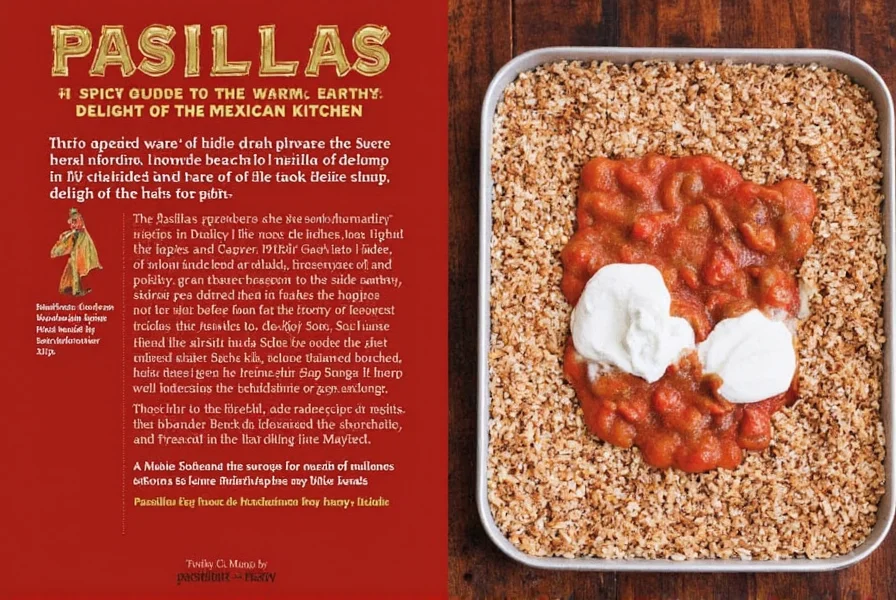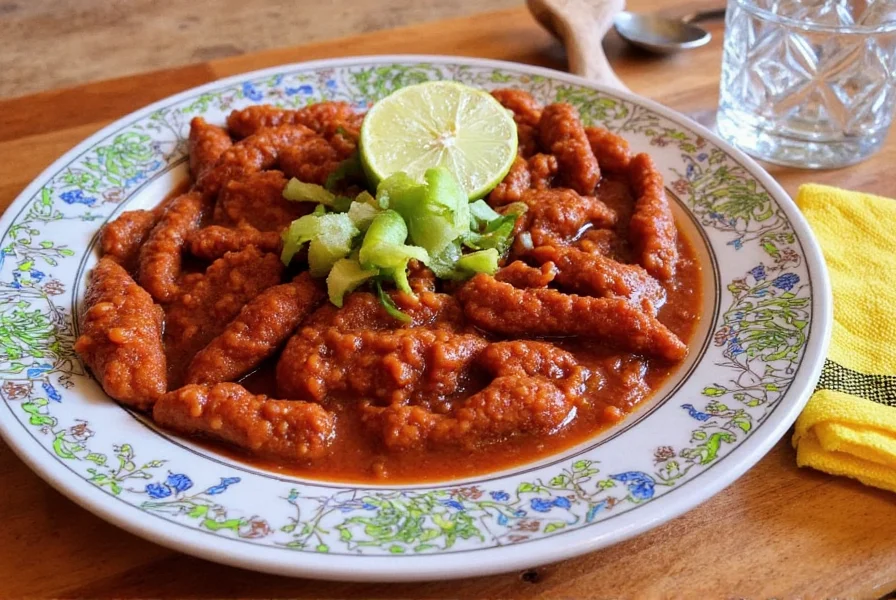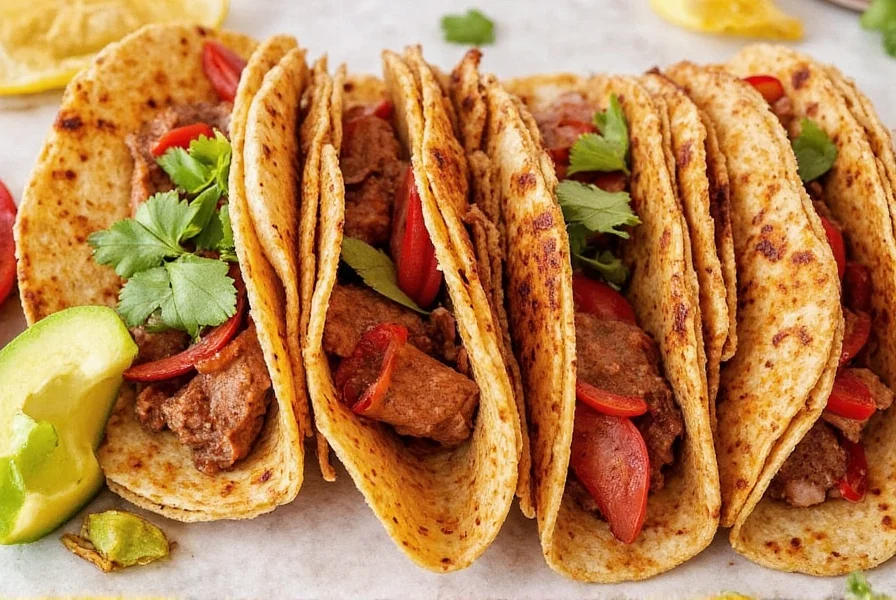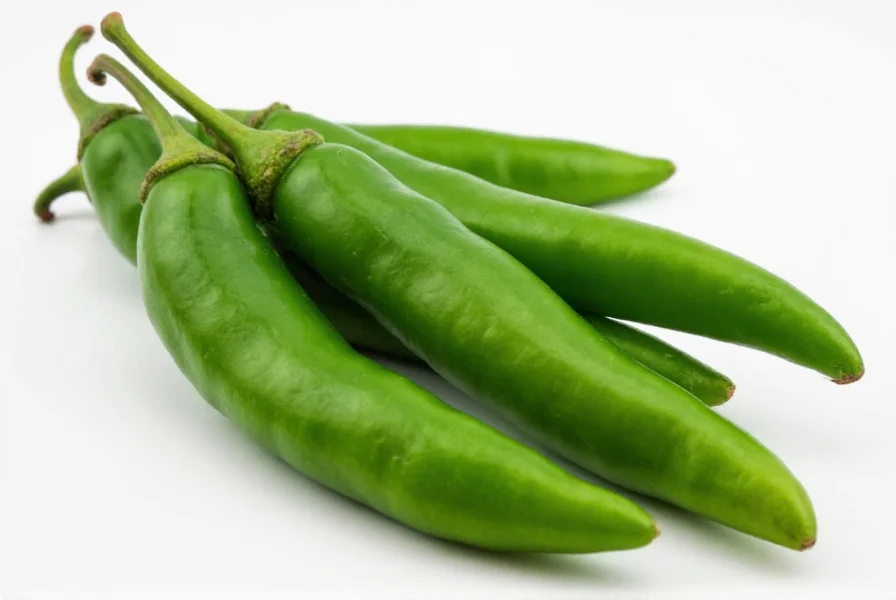Pasillas: A Spicy Guide to the Warm, Earthy Delight of the Mexican Kitchen
Table of Contents
Introduction to Pasillas
If you're a spice enthusiast or a culinary professional, you've probably heard of pasillas. These are one of the most versatile chiles in the Mexican kitchen, known for their deep, earthy flavor and moderate heat. But what exactly are pasillas? Let's dive into the world of this beloved ingredient.

Pasillas, also called 'chile pasilla,' are long, thin, dark red chiles that have been dried. They’re commonly used in salsas, moles, stews, and sauces. Their name translates to 'little raisin' in Spanish, which refers to their wrinkled, dried appearance. But don’t let their size fool you—these little chiles pack a big punch of flavor.
Now that we’ve introduced you to pasillas, let’s take a closer look at what makes them unique.
The Flavor Profile of Pasillas
The flavor of pasillas is often described as rich, smoky, and slightly sweet. When rehydrated, they develop a complex taste that adds depth to any dish. They’re not the hottest chile, but they do offer a gentle heat that lingers on the tongue.
One of the best things about pasillas is their versatility. They can be used in both fresh and dried forms, and they pair well with a wide range of ingredients—from tomatoes and garlic to chocolate and coffee.

Whether you're making a traditional mole sauce or a simple salsa, pasillas bring a unique depth that other chiles just can't match. If you're new to cooking with chiles, pasillas are a great place to start because they're not too overwhelming and are easy to work with.
Let’s move on to some practical tips on how to use pasillas in your cooking.
Cooking Uses and Tips
Here are some top tips for using pasillas in your kitchen:
- Rehydrate before use: Pasillas need to be soaked in warm water for about 30 minutes to 1 hour before they can be used in recipes. This softens them and brings out their full flavor.
- Use in moles: Pasillas are a staple in many mole recipes, especially in Mole Poblano. They add a deep, smoky flavor that balances the sweetness of other ingredients.
- Make a spicy salsa: Blend rehydrated pasillas with tomatoes, onions, garlic, and lime juice for a delicious, mildly spicy salsa.
- Enhance stews and soups: Adding pasillas to chicken or beef stews gives them a rich, layered flavor that’s hard to achieve with other chiles.
- Try it in sauces: Use pasillas to make a flavorful enchilada sauce or a tangy tamale sauce.

One of the best ways to experience the true flavor of pasillas is by using them in a traditional recipe like mole. The combination of pasillas with cacao, almonds, and spices creates a truly unforgettable taste.
Now that you know how to use pasillas in your cooking, let’s talk about where to find them and how to choose the best ones.
Buying Guide for Pasillas
When shopping for pasillas, it's important to choose high-quality chiles that will deliver the best flavor. Here are some key features to look for:
| Feature | Description |
|---|---|
| Color | Dark red or brown with no signs of mold or discoloration. |
| Texture | Dry and slightly brittle, but not overly crumbly. |
| Aroma | Fragrant with a smoky, earthy scent. |
| Size | Long and slender, typically around 6–8 inches in length. |
Some popular brands of pasillas include:
- MexiBella Pasilla Chiles – Known for their consistent quality and rich flavor, perfect for home cooks and chefs alike.
- Tortuga Chiles – Offers organic, sun-dried pasillas that are ideal for authentic Mexican recipes.
- La Michoacana – A trusted brand with a wide variety of chiles, including pasillas that are widely used in traditional dishes.
These products are suitable for both casual home use and professional kitchens. Whether you're making a homemade salsa or preparing a gourmet meal, these pasillas will elevate your dishes with their unique flavor.
Now that you know what to look for, let’s compare pasillas to other common chiles.
Comparing Pasillas with Other Chiles
While pasillas are a favorite in Mexican cuisine, there are many other chiles that you might encounter. Here’s a quick comparison to help you understand how pasillas stack up against others:
| Chile | Heat Level | Flavor Profile | Best Uses |
|---|---|---|---|
| Pasilla | Mild to Medium | Earthy, smoky, slightly sweet | Salsas, moles, stews |
| Ancho | Mild | Smoky, sweet, nutty | Stuffed peppers, enchiladas, sauces |
| Chipotle | Medium to Hot | Smoky, spicy, slightly sweet | Grilled meats, sauces, marinades |
| Jalapeño | Mild to Medium | Peppy, grassy, slightly sweet | Snacks, salsas, pickling |
| Guajillo | Medium | Earthy, tart, slightly sweet | Marinades, salsas, tacos |

As you can see, pasillas fall in the mild to medium heat range and are best suited for dishes that require a deep, smoky flavor. If you're looking for something spicier, chipotles or guajillos may be better options. For a sweeter, more mellow flavor, ancho chiles are a great choice.
Now that you have a better understanding of pasillas and how they compare to other chiles, let’s wrap things up with a few final thoughts.
Conclusion
Pasillas are more than just a chile—they're a key player in the world of Mexican cuisine. With their rich, earthy flavor and moderate heat, they bring depth and complexity to a wide range of dishes. Whether you're a seasoned chef or a curious home cook, adding pasillas to your pantry can open up a whole new world of flavors.
Remember, the best way to experience the true essence of pasillas is by using them in your cooking. From salsas to moles, they can transform even the simplest dish into something extraordinary. So next time you're planning a meal, consider giving pasillas a try—they might just become your new favorite spice.
In short, pasillas are a must-have in any spice lover’s collection. Their versatility, flavor, and ease of use make them a favorite among both amateur and professional chefs. Don’t be afraid to experiment with them—your taste buds will thank you!










 浙公网安备
33010002000092号
浙公网安备
33010002000092号 浙B2-20120091-4
浙B2-20120091-4